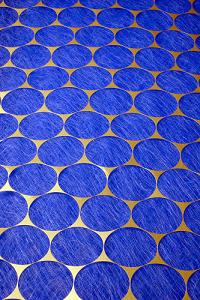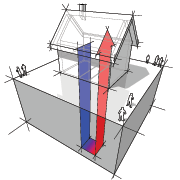 The Environmental Protection Agency (EPA) and Department of Energy (DOE) agree that geothermal cooling and heating is the most cost effective, environmentally friendly way to keep your home comfortable. Continue reading “5 Compelling Reasons to Give Geothermal Cooling and Heating Serious Thought”
The Environmental Protection Agency (EPA) and Department of Energy (DOE) agree that geothermal cooling and heating is the most cost effective, environmentally friendly way to keep your home comfortable. Continue reading “5 Compelling Reasons to Give Geothermal Cooling and Heating Serious Thought”
Tag: environmental protection agency
The R-22 Phaseout Is Speeding up — Is Now the Time for an A/C Replacement?
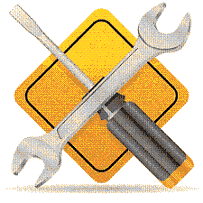 You may not have heard of R-22, but you’re probably familiar with the term “Freon,” which is the proprietary name. R-22 is a refrigerant used in air conditioning systems to create cold air. Continue reading “The R-22 Phaseout Is Speeding up — Is Now the Time for an A/C Replacement?”
You may not have heard of R-22, but you’re probably familiar with the term “Freon,” which is the proprietary name. R-22 is a refrigerant used in air conditioning systems to create cold air. Continue reading “The R-22 Phaseout Is Speeding up — Is Now the Time for an A/C Replacement?”
Geothermal Cooling and Heating: What’s Good for You Is Good for the Planet, Too
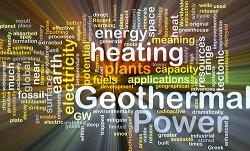 Is Your Home a Candidate for an Energy Efficient Geothermal System?
Is Your Home a Candidate for an Energy Efficient Geothermal System?
If you’ve researched your HVAC options, you may know that geothermal cooling and heating systems are some of the most efficient systems on the market. But you might not be aware that they’re some of the most environmentally friendly, as well. Continue reading “Geothermal Cooling and Heating: What’s Good for You Is Good for the Planet, Too”
Is Refrigerant Huffing A Problem In Your Area? Addressing Issues With Safety, Efficiency
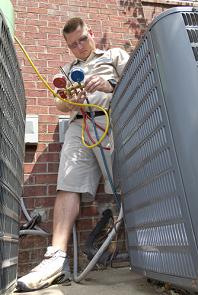 Simple Precautions Can Keep People from Abusing Freon
Simple Precautions Can Keep People from Abusing Freon
Recent news stories about refrigerant huffing are raising the awareness of homeowners about its dangers to people and their air conditioners. Continue reading “Is Refrigerant Huffing A Problem In Your Area? Addressing Issues With Safety, Efficiency”
Energy Star: The Label Can Help You Select Better Home-Comfort Equipment
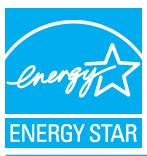 Learn What That Blue Tag Means For Your Energy Bill
Learn What That Blue Tag Means For Your Energy Bill
Even if you’ve downright scurried through a home-improvement store, the Energy Star label has probably caught your eye. And now that you’re searching for an appliance, you’ll probably slow down long enough to see just how valuable this label really is. Continue reading “Energy Star: The Label Can Help You Select Better Home-Comfort Equipment”
Your Air Conditioner’s Filter: Making Sense Of The MERV Numbers
Our Experts Explain How Your HVAC Air Filter Works
Your air conditioner’s filter is important for enhancing home comfort and indoor air quality, and for the efficiency of your system. Continue reading “Your Air Conditioner’s Filter: Making Sense Of The MERV Numbers”
Is Mold A Problem After This Year’s Wet Weather Conditions? When To Call The Pros
 Learn About Mold Abatement to Remove Spores From Your Home
Learn About Mold Abatement to Remove Spores From Your Home
When a region receives an unusually high amount of rain and when relative humidity is high the resulting moisture can lead to mold problems. Left unchecked, mold growth can become rampant, lower the value of your home, cause health problems and generally be inconvenient to repair. Continue reading “Is Mold A Problem After This Year’s Wet Weather Conditions? When To Call The Pros”
What is a Heat Recovery Ventilator?
Ventilators Move Fresh Air in and Stale Air Out of Your Home
Heat recovery ventilators (HRVs) are among the most energy-efficient ventilation systems available. They pull fresh air inside, filtering it while expelling stale air. They also essentially “recapture” the energy of the outgoing, stale air and “give” it to the incoming air. Typical heat recovery ventilators can recycle about 85 percent of this warm or cool energy, taking strain off your HVAC system. There are a plenty of HRV models that attach to pre-existing ductwork.
Heat recovery ventilators accomplish the heat exchange inside the heat exchanger core, where the currents of incoming fresh air and outgoing stale air both pass. This is where the energy is collected and saved. The two different air flows, however, do not cross.
The U.S. Environmental Protection Agency and the American Lung Association recommend HRVs as some of the best ventilation systems on the market to improve indoor air quality and health. If you achieve energy savings with a tightly sealed home, your indoor air is probably not well circulated, leading to indoor pollution.
Heat recovery ventilators reduce indoor pollution from common factors including:
- Off-gassing and fumes from building materials and carpets.
- Fumes from household cleaners.
- Excess humidity.
- Mold, allergens, dust, and airborne bacteria and viruses.
- Carbon dioxide exhaled by residents (each person exhales about 1 kg per day).
Fresh, filtered air can lead to vast improvements for many individuals plagued by recurring issues such as respiratory problems, headaches, allergies, lethargy and more.
Pre-installed ventilation systems in houses such as bathroom fans and stovetop fans can only go so far. These expel some heat, humidity and fumes, but also pull in pollutants from outside, dust particles from the attic, humidity, and radon, the second cause of lung cancer in the US after cigarettes. Opening windows won’t filter the air or maintain your indoor temperature, but will strain your HVAC system
In the ongoing quest for energy efficiency, heat recovery ventilators are good investments, and can extend the life span of your HVAC system. If you’re thinking about improving your indoor air quality and want expert advice, feel free to call the professionals at T. F. O’Brien. We’re happy to help.
Our goal is to help educate our customers about energy and home comfort issues (specific to HVAC systems). For more information about heat recovery ventilators and other HVAC topics, click here to download our free Home Comfort Resource guide.
Does Ductwork Mold Take Winter Off?
During the winter season on Long Island, it wouldn’t seem possible for mold to build up as dry heat goes constantly through your ducts. Your duct system is the guts of your furnace and cooling systems and must be kept healthy. While it’s true that mold is a bigger issue in the summer months, the winter season does not let homeowners off the hook when it comes to dangerous mold.
No matter the season, the inside of your HVAC system has its own micro-climate. There may be water leaks and humidity within your walls that are not obvious to the casual observer. Because doors and windows are usually shut tight in winter, your family may be even more exposed to mold in the closed environment.
Mold in the New York area is such a big problem that a government study was funded to assess the extent of the issue faced by residents and propose some solutions. The report noted that mold is connected to serious symptoms of disease and discomforts such as allergic reactions, asthma attacks and skin reactions. If you or your family is suffering from allergy symptoms or even unexplained fatigue and tiredness, house mold could be the culprit.
The EPA (US Environmental Protection Agency) recommends that you have your air duct system cleaned if there is substantial visible mold growth in your ducts or other components of your heating and cooling systems.The agency suggests that you have the system inspected by a professional to find and address the root cause of the problem. After your inspection and possible clean-up, think about signing up for a semi-annual HVAC maintenance plan to catch any problems, such as mold buildup, early. Remember that certain types of mold can be toxic. Act now to protect your family’s health and keep your home comfortable.
T.F. O’Brien services the Long Island, New York area.
Our goal is to help educate our customers about energy and home comfort issues (specific to HVAC systems). For more information about preventive maintenance and other HVAC topics, please download our free Home Comfort Resource guide.
How to Control Your Home’s Indoor Air Quality
More and more people are being treated for allergy and asthma symptoms, and experts suspect that poor indoor air quality is one of the reasons. Some studies show that the average person spends as much as 90% of their time inside and that could be contributing to health problems.
Homes today are being built tight to conserve energy. But, by sealing up the house there is very little fresh air coming in. Improving ventilation and installing air cleaners are practical ways that you can control the quality of your home’s indoor air.
The U.S. Environmental Protection Agency has been studying the problem of indoor air pollution and has issued a number of recommendations on how to keep your home safe. Running the vacuum regularly and dusting are practical ways to eliminate potential threats. Proper ventilation in bathrooms and kitchens is also recommended to vent excess moisture from showering and cooking. The EPA also advises not to permit smoking in your home and to store paints and pesticides outside of your living quarters.
Sometimes installing an exhaust fan is not sufficient to improve ventilation in the home. You may need an exchange unit which brings in clean air from the outside as it forces the stale air out. Some of these units can also retain hot or cool air and act as a dehumidifier to eliminate moisture. A T.F. O’Brien technician can determine what size unit would be appropriate for your home. This is also an excellent time to consider installing an electronic air cleaner which will do a much better job of removing contaminants from the air than the typical furnace filter.
If you are concerned about the indoor air quality in your home, take the EPA’s Care for Your Air Tour which goes room by room through the typical house identifying hidden dangers. Here’s a document the EPA put out on caring for your home air.
T.F. O’Brien services the Long Island, New York area.
Our goal is to help educate our customers about energy and home comfort issues (specific to HVAC systems). For more information about preventive maintenance and other HVAC topics, please download our free Home Comfort Resource guide.

